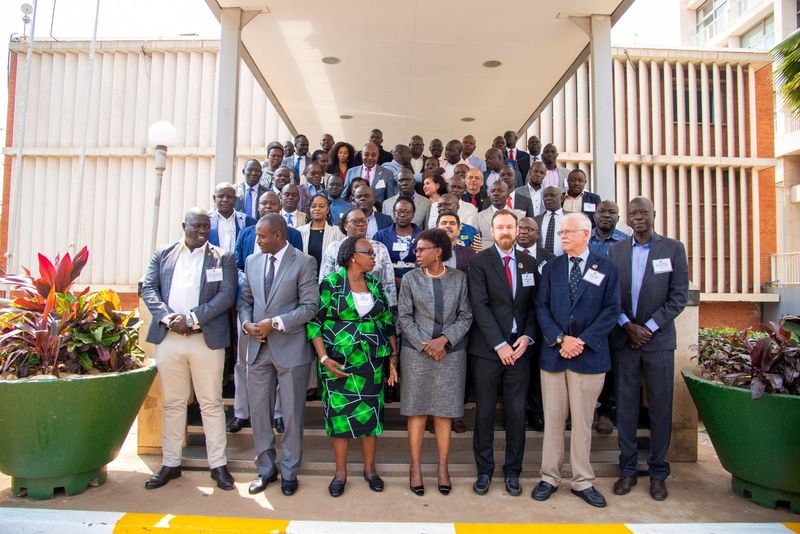
Uganda is on the verge of a historic public health breakthrough as it inches closer to eliminating river blindness and several other neglected tropical diseases (NTDs) that have long burdened its most vulnerable communities. This milestone was celebrated at the opening of the 18th session of the Uganda Onchocerciasis Elimination Expert Advisory Committee (UOEEAC) held on August 5, 2025, at the Sheraton Kampala Hotel.
The high-level meeting, attended by global health experts, government leaders, and development partners, marked a turning point in Uganda’s decades-long battle against NTDs. “Last year, it was reported that 45 out of 50 districts in 16 of the 17 endemic foci had met the criteria for interruption of onchocerciasis (river blindness) transmission,” announced Health Minister Dr. Jane Ruth Aceng. “That means 7.4 million out of 8.2 million Ugandans previously at risk are now safe.”
River blindness, or onchocerciasis, is a parasitic disease transmitted by blackflies. It causes intense itching, disfiguring skin conditions, and, in severe cases, irreversible blindness. Uganda’s remarkable progress stems from aggressive interventions launched in 2007, led by the UOEEAC and supported by partners such as the Carter Center, World Health Organization (WHO), and the Reaching the Last Mile Fund.
Only five districts in the Upper Madi region, which do not border South Sudan, remain to be fully evaluated for onchocerciasis transmission status. “This is a tremendous public health success,” said Dr. Aceng. “With strong partner support, we’re confident Uganda will eliminate river blindness by the WHO’s 2030 target.”
Uganda’s gains extend far beyond onchocerciasis. Dr. Aceng reported that the country has halted mass treatment for lymphatic filariasis in all 70 endemic districts and is currently conducting assessments in 13. Additionally, trachoma has been eliminated in 50 of 52 previously endemic districts, while Gambiense sleeping sickness was certified as eliminated by WHO in 2023.
However, she warned that bilharzia (schistosomiasis) remains a concern. The Ministry of Health is now piloting mass treatment for children under five using pediatric praziquantel, with support from the Carter Center. “We thank the Carter Center for agreeing to integrate bilharzia treatment into the last five districts. It’s a critical step forward,” Dr. Aceng said.
She also emphasized the need for cross-border cooperation, especially with South Sudan and Kenya, to combat other NTDs such as trachoma and leishmaniasis. “Diseases know no borders. Our joint efforts with DRC and South Sudan are essential in this last mile,” she stressed.
Dr. Herbert Nambasa, Commissioner for Environmental Health at the Ministry of Health, highlighted Uganda’s NTD Master Plan as a tool for domestic resource mobilization and district-level integration. “We’ve enabled districts to embed NTD interventions into their budgets and programs. This is how we’re sustaining momentum,” Nambasa explained.
He commended health workers in border districts for their resilience despite logistical and security challenges, especially in hard-to-reach areas. “Managing trans-border transmission is tough. But through persistent collaboration, we are confident the final five districts will be cleared in the coming years,” he added.
WHO Representative to Uganda, Dr. Mansour Ranjbar, praised Uganda’s “remarkable strides” and reaffirmed WHO’s support. “Uganda has interrupted transmission in 16 of 17 onchocerciasis-endemic zones, and the elimination of Gambiense sleeping sickness proves what’s possible. But with 90% of global river blindness cases still in 31 African countries, surveillance and partnership remain critical,” Ranjbar said.
He called for sustainable financing, stronger integration, and multi-sectoral collaboration to accelerate progress continent-wide.
Gregory Noland of the Carter Center paid tribute to the late President Jimmy Carter, who passed away last December at age 100 and dedicated his post-presidency to fighting neglected diseases. “President Carter’s legacy lives on through our work here. Despite the setback of losing USAID support, we are hopeful through initiatives like the Gates Foundation and UAE’s Reaching the Last Mile Fund—a six-year investment targeting onchocerciasis and lymphatic filariasis elimination,” Noland said.
He also underscored the importance of integrated programming, including mental health, in the NTD response. “With limited resources, we must be smart and collaborative. The Carter Center is proud to support Uganda’s new mental health initiatives alongside NTD work.”
Professor Thomas Unnash, chairing the UOEEAC, reflected on Uganda’s journey from mass drug administration and vector control to today’s focus on post-elimination sustainability. “The agenda reflects that Uganda is in the last mile of a marathon. Let’s cross the finish line with coordination, surveillance, and unwavering resolve,” he urged.
The two-day meeting drew delegations from South Sudan, Democratic Republic of Congo, and across Uganda—serving as a powerful demonstration of what is possible through unified action.
From once treating over 8.2 million people for river blindness to now targeting the last 600,000, Uganda’s NTD campaign is being hailed as a model for Africa and beyond.
As Dr. Aceng said; “With unity, science, and sustained effort, Uganda will join Niger and others that have conquered river blindness. Let’s get to the finish line—together.”




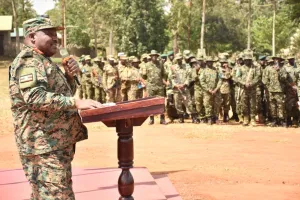



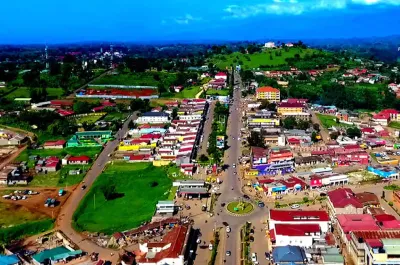



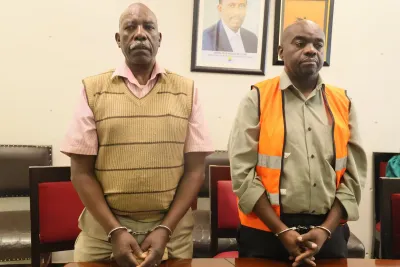
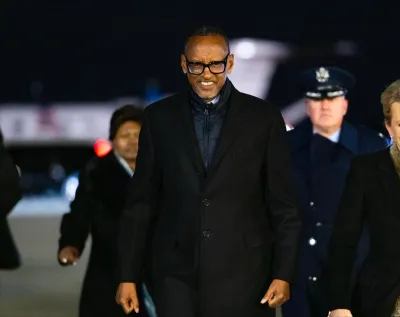
Roswell Mbabazi
Leave a Comment
Your email address will not be published.